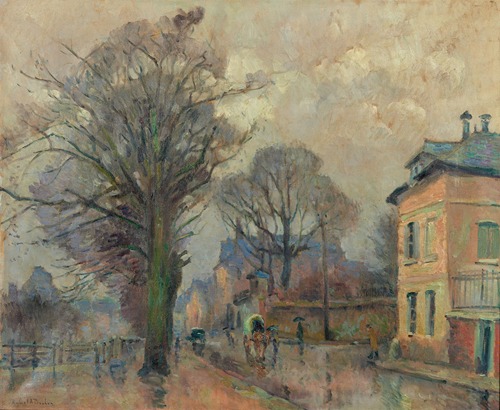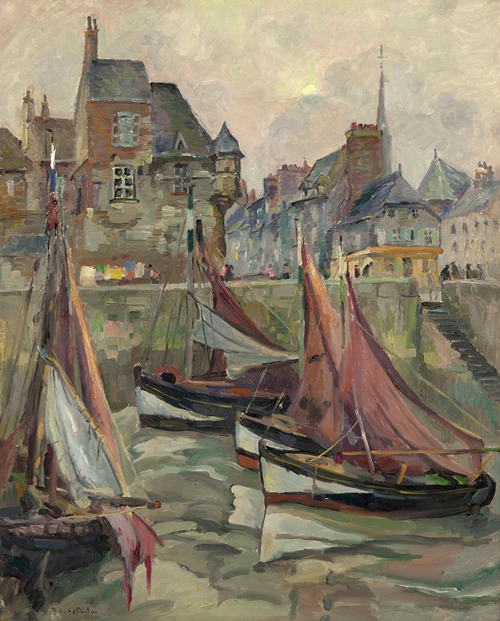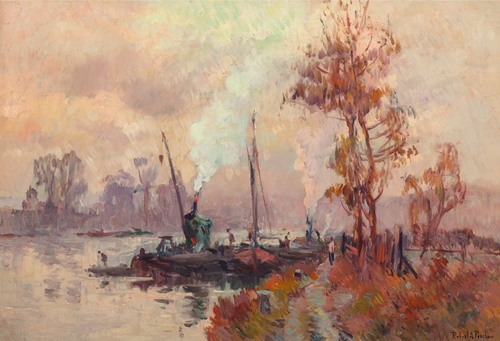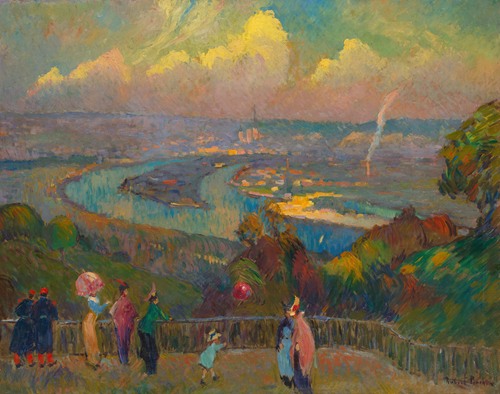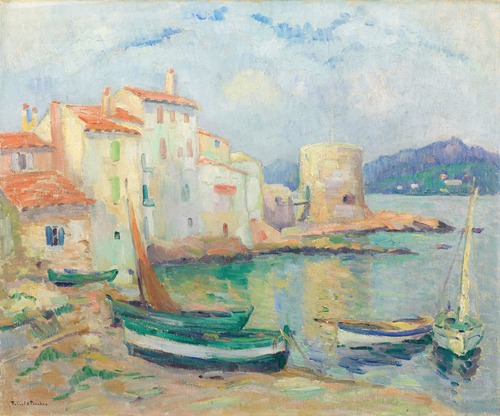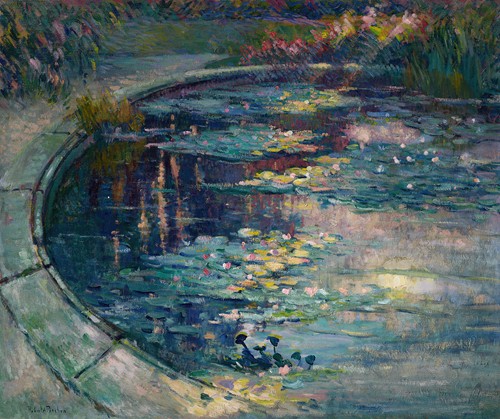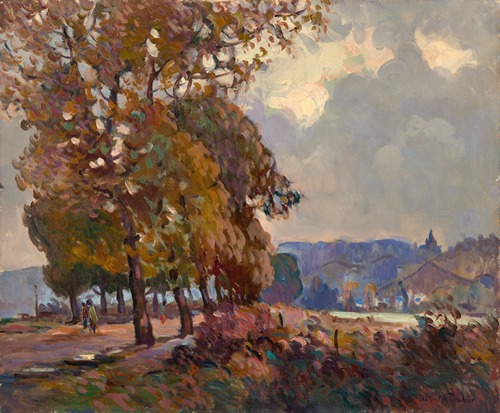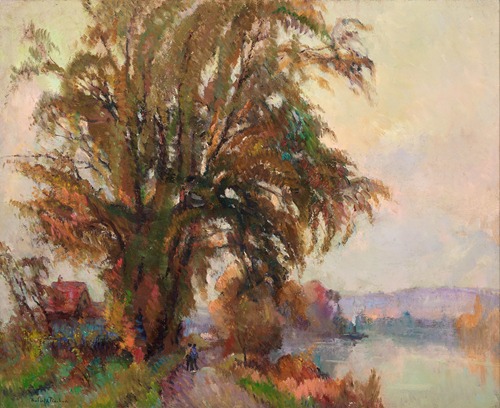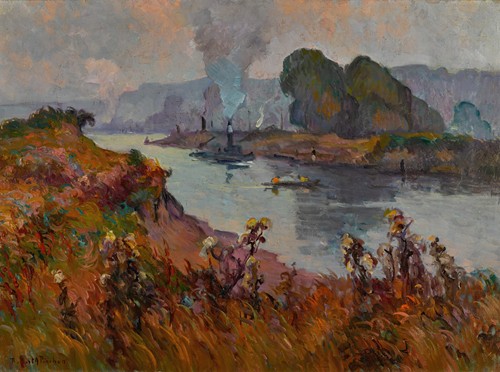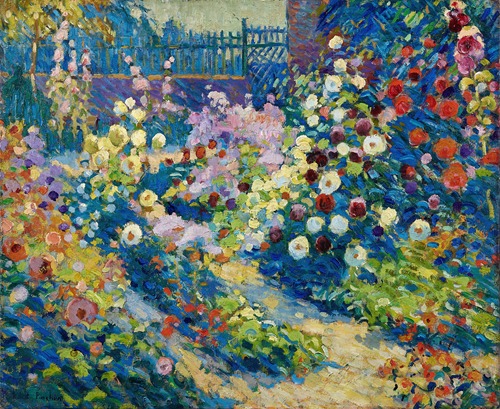
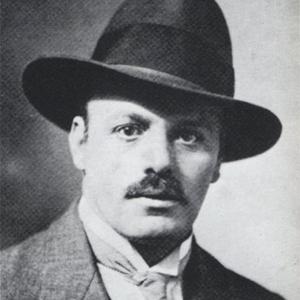
Robert Antoine Pinchon was a French Post-Impressionist landscape painter of the Rouen School (l'École de Rouen) who was born and spent most of his life in France. He was consistent throughout his career in his dedication to painting landscapes en plein air (i.e., outdoors). From the age of nineteen (1905 to 1907) he worked in a Fauve style but never deviated into Cubism, and, unlike others, never found that Post-Impressionism did not fulfill his artistic needs. Claude Monet referred to him as "a surprising touch in the service of a surprising eye".
Among his important works are a series of paintings of the River Seine, mostly around Rouen, and landscapes depicting places in or near Upper Normandy.
Robert Antoine Pinchon was born into an artistic and literary environment. His father, Robert Pinchon, a librarian, journalist, playwright and drama critic, was an intimate friend of Guy de Maupassant and also became a close protege of Gustave Flaubert. Maupassant and Robert Pinchon (La Tôque, as they called him) co-wrote in 1875 a script for a play entitled A la Feuille de Rose, Maison Turque, on the subject of eroticism and prostitution. The piece was presented officially on 15 May 1877 at the studio of Maurice Leloir, in front of Gustave Flaubert, Émile Zola, Ivan Turgenev and eight elegantly dressed masked women.
Since his son showed early signs of interest and aptitude in the arts, Robert Antoine's father purchased a box of oil paints and accompanied him on long Sunday painting walks. An 1898 photograph shows him painting at the age of twelve. He exhibited some of his first paintings in 1900 at fourteen years of age.
In 1900 Robert Antoine exhibited a painting in the storefront of a camera supply store owned by Dejonghe and Dumont in the rue de la République, one of the principle arteries of central Rouen. Though not a typical showspace, it was nonetheless visible to the public and located only a few meters from l'Hôtel du Dauphin et d'Espagne, known for its exhibitions of artists such as Gauguin, Monet, Pissarro, Degas, Renoir, Cézanne, Guillaumin and Sisley. The art critic Georges Dubosc wrote an article about Pinchon's painting in Le Journal de Rouen (16 March 1900).
Robert Antoine Pinchon studied at Lycée Pierre-Corneille in Rouen at the turn of the century. Two other students in his class also became well-known artists and lasting friends: Marcel Duchamp and Pierre Dumont. Drawing classes at the Lycée were given by the stern and rigorous Philippe Zacharie [fr] (1849–1915), who became assistant professor of the school in 1874. In 1879, Zacharie was named professor at the Académie de Peinture et de Dessin, which would later become the École Régionale des Beaux-Arts de Rouen [fr].
In addition to the academic training of the Beaux-Arts, Pinchon frequented the Académie libre that had been founded in 1895-96 by Joseph Delattre (1858-1912) in the rue des Charrettes, a rallying point for independent artists of the new generation of l'École de Rouen.
Robert-Antoine Pinchon died on 3 January 1943 in Bois-Guillaume, France, at the age of 56.
